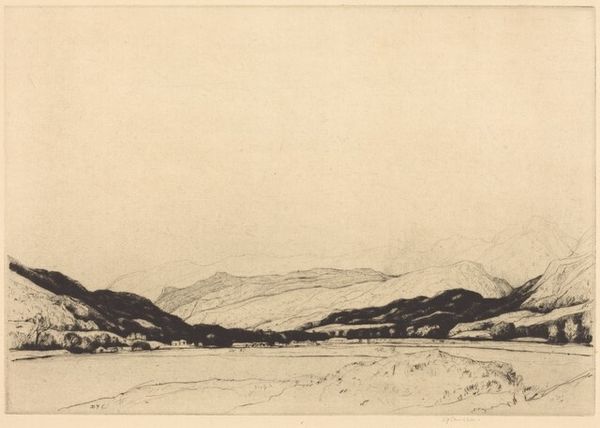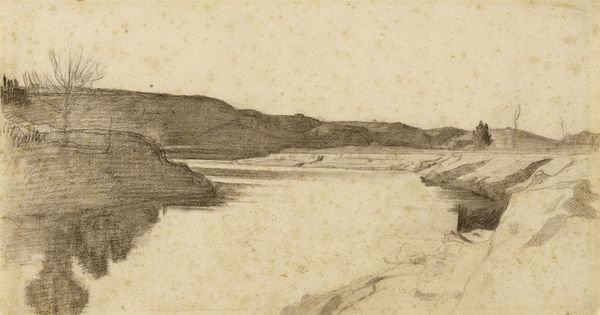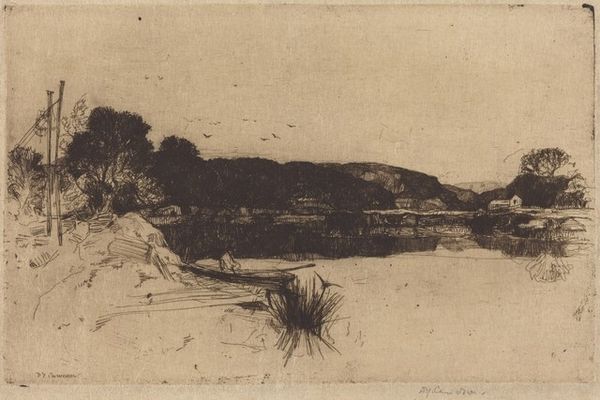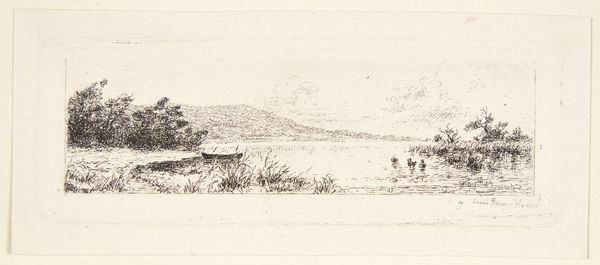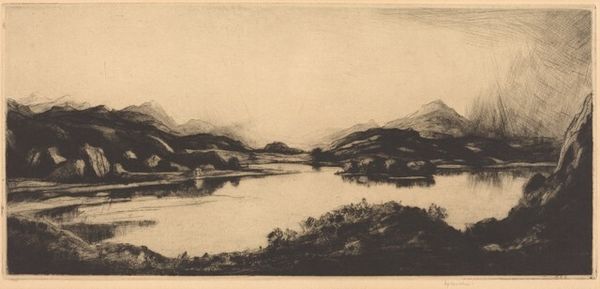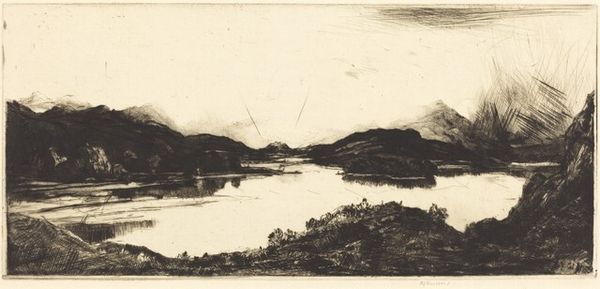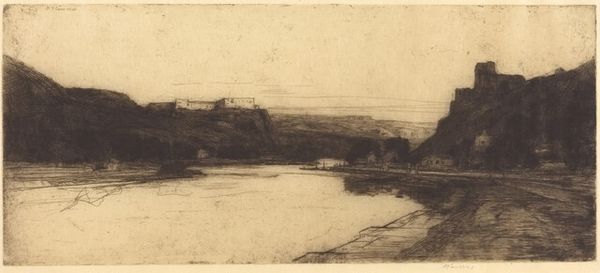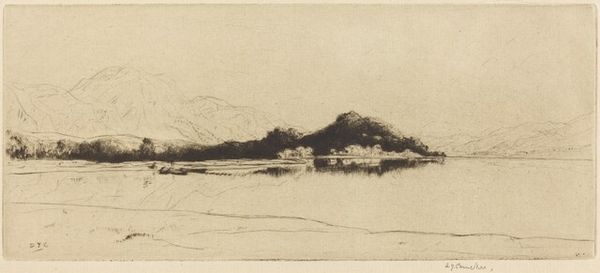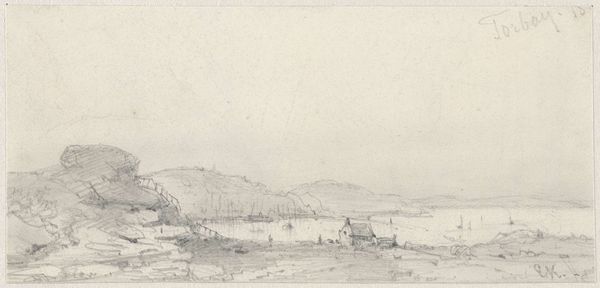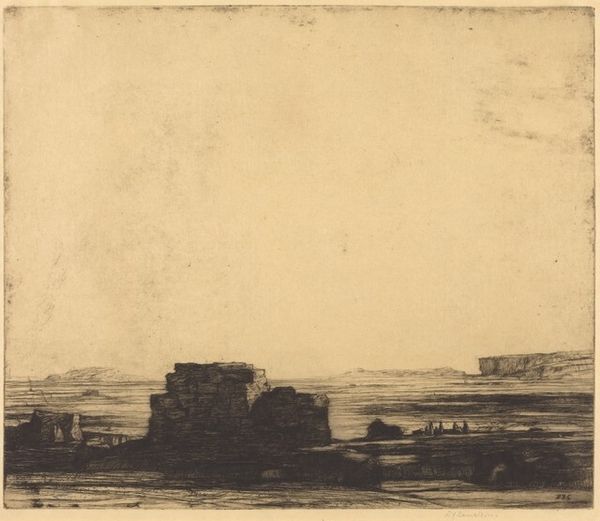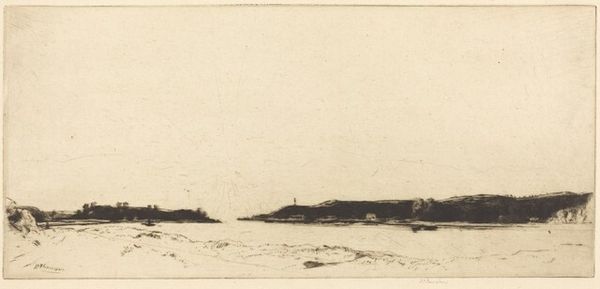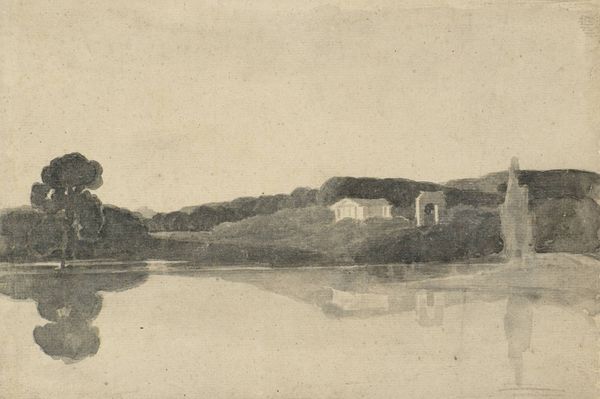
Copyright: National Gallery of Art: CC0 1.0
Curator: Looking at this scene, the pervasive stillness makes quite an impact. Editor: Yes, the muted tones lend it a certain quietude. Let's explore D.Y. Cameron's "Elcho on the Tay," an etching from 1900. I find it intriguing as a testament to late 19th and early 20th-century printmaking techniques. Curator: Absolutely. Notice how the layering of the etching lines affects the overall tonal range. One begins to appreciate the process of creating the plate itself. Where were these prints distributed, who acquired them and how? That tells us something of art world distribution. Editor: True, but observe the composition – the low horizon line amplifies the vastness of the sky, almost dwarfing the landscape below. It lends an incredible sense of scale, wouldn’t you agree? What seems like quite a bare minimum, pictorially, in the landscape area becomes more impressive because of it. Curator: And the social conditions around these landscapes? These were not simply images; the means of production played a significant role. Think about the labor involved. This image idealises rural life while obscuring working people and related conditions. Editor: Perhaps, but it is hard to deny Cameron’s deftness with the etching needle. See how the light subtly touches the water's surface, reflecting and fragmenting across the composition to subtly unsettle any simplistic ideas. There's an undeniable beauty in that effect that can only be seen formally. Curator: I cannot divorce that "beauty" from its place of creation and what those idyllic settings leave out of the story of that locale. Beauty exists within a network of related resources. The print becomes a commodified version of pastoral escape, circulated for profit. Editor: Fair point, and considering the labor involved is pertinent, but maybe let's return to how this all contributes to the lasting emotional impact on viewers even now? I find myself feeling a longing for someplace calmer after gazing on this for a while. Curator: An etching such as this is a testament to how material realities are translated into idealized representations and consumed by an art market always eager for the next fleeting glimpse of bucolic respite. Editor: I, instead, see "Elcho on the Tay" as more than mere document of time, place, and consumption – for its masterful orchestration of form that invites introspective contemplation, an ode to serenity if you will.
Comments
No comments
Be the first to comment and join the conversation on the ultimate creative platform.
